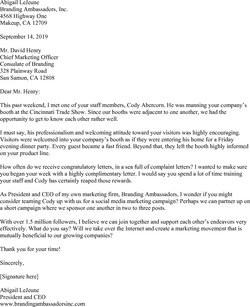How to Write a Letter
Knowing how to write a letter, whether business or personal, is a skill we all need. Sometimes, these letters will be short and informal emails. Other times, they'll be highly polished for corporate correspondence. Below, we'll lay out the specific steps for letter-writing, explore some general tips, and review two specific types of letters.
- Writing a Letter
Let's tackle how to write a letter in proper order, from top to bottom. These steps will mostly be directed toward a formal letter. The good news is that an informal letter is even easier. You can dial back or remove a few of the elements we're about to discuss when writing an informal letter.
- To start, place your full address -- including your full name, street address, city, state, and zip code -- in the upper left-hand corner.
- Skip a line and include the date.
- Skip a line and place the recipient's full address. Here, you'll want to include the company name, the recipient's name and title, and mailing address.
- Skip a line and begin the letter. In the body of your letter, separate your thoughts into paragraphs. You never want to draft one big block of text. For each new set of thoughts or ideas, begin a new paragraph.
- Skip one of your final lines to include a complimentary close. The closing can be as simple as, "Sincerely," "Yours truly," or "Gratefully." This should end with a comma.
- Skip three lines (where you'll insert your handwritten signature), and type your full name. You may also include your title on the next line.
- If you're including any attachments with your letter, skip one more line and type "Enclosure." If there's more than one attachment, indicate how many there are in parentheses, as in "Enclosure (4)."
For a few more pointers, check out our article on Business Communication Letter Writing.
- Sample Letter
Keeping the above formula in mind, here's a sample letter that illustrates each section. Below the sample text here, you will find a fully editable PDF that you can use as a template for drafting your own letter
- A Few More Writing Tips
With this general formula in mind, let's review a few tips:
- Know your audience. Only use technical terms or jargon if you are sure the reader will understand.
- Be clear and to the point. Do not write two pages if one will do. Leave out unnecessary details. As you re-read your letter for accuracy, ask yourself if anything in there is unnecessary information.
- Remain professional. Do not include any threats or slander in your letter, even if you are writing a complaint letter or a letter of resignation.
- Types of Letters
Letters can be either informal or formal. An informal letter doesn't need to abide by all the above standards. They don't require a formal address at the top and "To whom it may concern" in the greeting. Rather, you can get straight to a "Dear Mary" greeting and can end with "Regards" or "Best wishes." Informal or personal letters may come in the form of email, but the premise remains the same.
- Informal or Personal Letters
It is important to know how to write a letter of a personal nature. Personal letters are not as formal as business letters and can be handwritten or typed. Informal letters can also indulge in slang or colloquialisms.
It is optional to include the date in the upper left-hand corner of your letter. You can just jump straight to an informal salutation, ending with a comma in lieu of a colon.
In the body, the first paragraph is usually an introduction setting out the reason you are writing. The next paragraphs go into more detail. The closing paragraph summarizes what you've had to say. You may want to thank the recipient or ask questions.
The closing comes after two skipped lines and can also be informal. If you want to add a P.S. or P.P.S. to your personal letter, skip another line and start the P.S. on the left-hand side of the paper.
- Formal Letters
Formal letters follow a set pattern, as you can see in the example above. One type of formal letter that will be an important part of most people's lives is the cover letter.
In a cover letter, you'll need to use a standard business format. Typically, in business or professional reports, you steer clear of contractions. You might want to hold formal letters to the same standard.
A cover letter should consist of approximately three body paragraphs. The first paragraph explains why you are writing, what position you want, and why you want it. The second outlines why you are the best person for the job and summarizes your skills and experience.
The closing paragraph mentions your resume and asks for an interview. You need to be strong and upbeat in this paragraph so the reader will want to interview you. Thank the person for his time and include contact information.
For more, here's how to Write a Creative Cover Letter.
- Written Communication Skills
Written communication is an important skill to list on a resume. And, in order to include that, letter writing should be in your wheelhouse. For other important attributes, check out the Best skills to list on a resume. There, we'll explore soft skills, such as adaptability and creativity, and hard skills, such as computer programming and web design.
Visit Examples of Letters and What to Include in Them for more advice and samples of different style of letters.








0 Comments